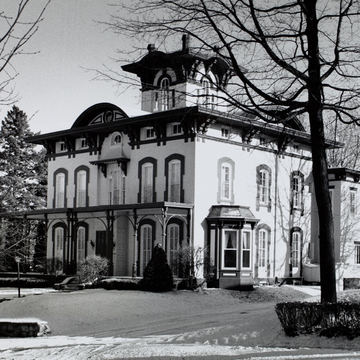You are here
George Stone House (West Lawn Terrace)
The George Stone house is another of Iowa's impressive contributions to America's Italian Villa mode. The editors of The American Agriculturalist, in an article titled “An Italian Villa” (January 1850), observed that, “Houses in the Italian Style are most appropriately placed up the side or on top of a hill” (p. 25). The Stone house appears in just this fashion;
Writing Credits
If SAH Archipedia has been useful to you, please consider supporting it.
SAH Archipedia tells the story of the United States through its buildings, landscapes, and cities. This freely available resource empowers the public with authoritative knowledge that deepens their understanding and appreciation of the built environment. But the Society of Architectural Historians, which created SAH Archipedia with University of Virginia Press, needs your support to maintain the high-caliber research, writing, photography, cartography, editing, design, and programming that make SAH Archipedia a trusted online resource available to all who value the history of place, heritage tourism, and learning.






